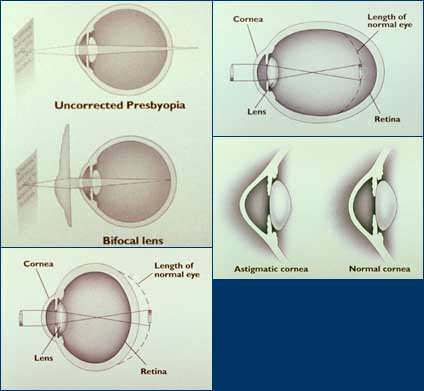Refractive Errors in Lancaster, PA
- Home
- Refractive Errors in Lancaster, PA
Also Serving Patients in Lititz, Elizabethtown, and Mount Joy

Myopia (nearsightedness)
Distance vision is impaired when the eye is too long in relation to the curvature of the cornea. This causes light to focus before it reaches the retina. Close objects look clear but distant objects appear blurry.
Hyperopia (farsightedness)
Close vision is impaired, with some impairment of distance vision, as well. The eye is too short in relation to the curvature of the cornea. Light rays are not yet in focus when they reach the retina, so images appear blurry.
Astigmatism (Oval-Shaped Cornea Instead of Round)
The irregular curvature of the cornea causes light to focus on more than one point on the retina. Uncorrected astigmatism impairs both distance and near vision.
Presbyopia (aging eyes)
When young, the lens of the eye is soft and flexible, allowing people to see objects both close and far away. After the age of 40, the lens of the eye becomes more rigid, making it more difficult for the lens to change its shape, or accommodate, to do close work such as reading. This condition is known as presbyopia and is the reason reading glasses or bifocals are necessary at some point after age forty.


